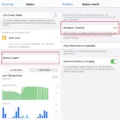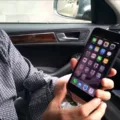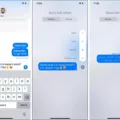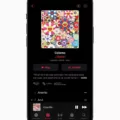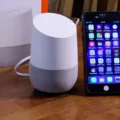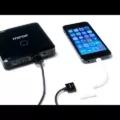The iPhone is a versatile device that offers a wide range of features and capabilities. One of its many functions is the ability to play music through a USB connection. However, there are times when users may encounter issues with their iPhone not playing music through USB. In this article, we will explore some of the possible reasons for this problem and provide potential solutions.
Firstly, it is important to ensure that the iPhone has been properly connected to the USB port. Make sure that the USB cable is securely plugged into both the iPhone and the stereo system or car’s infotainment system. If the connection is loose or unstable, it may prevent the iPhone from playing music through USB.
Additionally, check the settings on your iPhone to ensure that the device allows access to accessories when locked. This can be done by going to Settings, selecting Face ID & Passcode or Touch ID & Passcode, and turning on the Accessories option under Allow Access When Locked. If this setting is off, you may need to unlock your device to connect accessories, which could be the reason why your iPhone is not playing music through USB.
If the USB device is not being recognized by your stereo or infotainment system, try disconnecting and reconnecting it again. Sometimes, a simple reconnection can resolve any connection issues. If there is still no playback after reconnecting the device, there are a few other things to consider.
Firstly, make sure that the USB device is not empty. Sometimes, if there are no files or music stored on the USB device, it may not be recognized or play any content. Ensure that there are music files or compatible media on the USB device.
Additionally, check the compatibility of the files on your USB device with your stereo system or car’s infotainment system. Some stereos or systems may only support specific file formats, such as MP3 or AAC. If the files on your USB device are not compatible, they may not play on your stereo. Try converting the files to a compatible format or using a different USB device with compatible files.
If you are still unable to connect your iPhone or play music through USB, try unplugging the USB cable and reconnecting it again. Sometimes, a simple reconnection can resolve any temporary connection issues.
If possible, try restarting your car’s infotainment system or stereo, and then attempt to connect your iPhone again. Sometimes, a system restart can refresh the connection and allow for proper playback.
Lastly, if you have previously used Android Auto with your device and car, it is possible that the issue lies with the USB cable itself. USB cables can become damaged or faulty over time, and this can impact the connection and playback. Try using a different USB cable to see if that resolves the issue.
If you are experiencing difficulties with your iPhone not playing music through USB, there are several potential solutions to consider. Ensure that the USB cable is securely connected, check the settings to allow access to accessories when locked, and verify the compatibility of the files on your USB device with your stereo or infotainment system. Try disconnecting and reconnecting the USB device, restarting the system, and using a different USB cable if necessary. By following these troubleshooting steps, you should be able to resolve the issue and enjoy your music through USB on your iPhone once again.
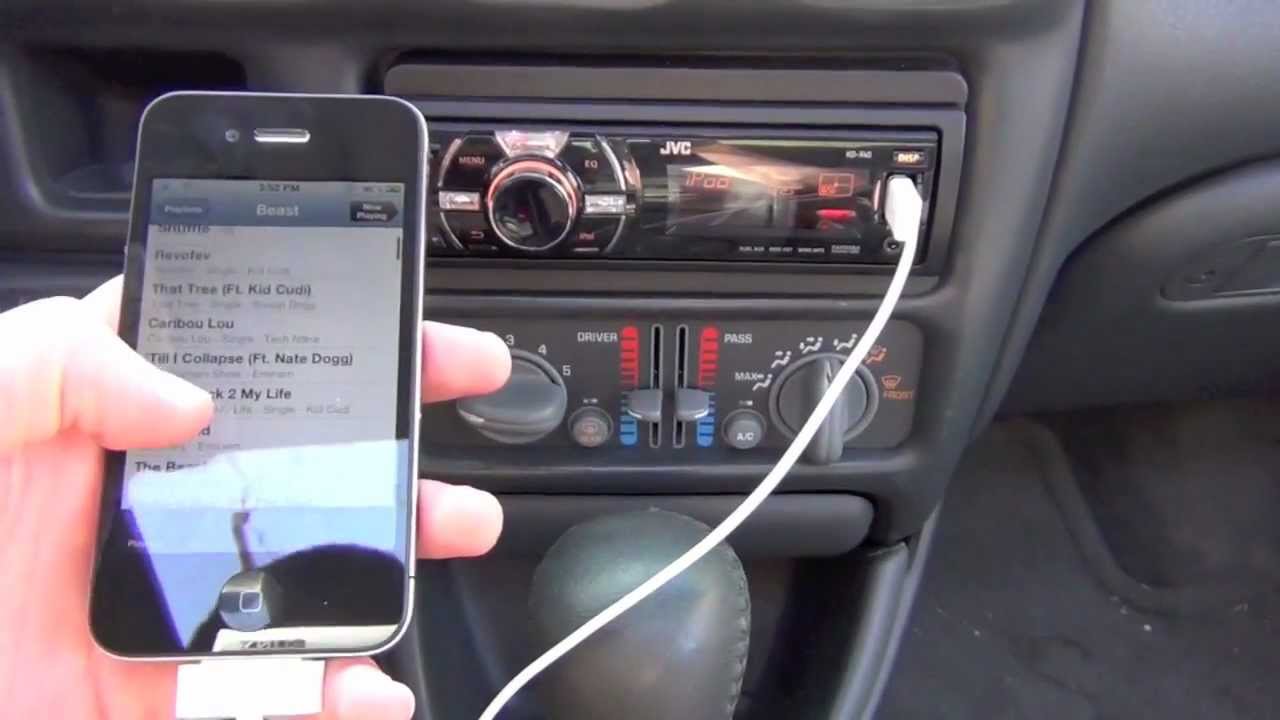
How to Enable USB Audio On Your iPhone?
To enable USB audio on your iPhone, follow these steps:
1. Unlock your iPhone and go to the Settings app.
2. Scroll down and tap on “Face ID & Passcode” or “Touch ID & Passcode” (depending on your iPhone model).
3. Enter your passcode or use your fingerprint/Face ID to authenticate.
4. In the “Allow Access When Locked” section, you’ll find various options. Look for “Accessories” and make sure it is turned on.
5. If the Accessories option is already enabled, you can proceed. If not, simply toggle the switch to turn it on.
6. Once you’ve enabled the Accessories setting, your iPhone will allow USB audio devices to connect even when the device is locked.
7. Now, connect your USB audio device to your iPhone using the appropriate USB cable or adapter.
8. Your iPhone should automatically detect the USB audio device and route audio output to it.
9. You can now enjoy audio playback through your USB audio device without needing to unlock your iPhone.
Why Won’t Your Music Play Over USB?
There could be several reasons why your music is not playing over USB on your stereo. Here are some troubleshooting steps you can take to address the issue:
1. Disconnect and reconnect the USB device: Sometimes, the connection between the stereo and the USB device may not be established properly. Try disconnecting the USB device from the stereo and then reconnecting it. This can help refresh the connection and resolve any temporary issues.
2. Check the USB device for content: Ensure that your USB device is not empty. If there are no music files or content saved on the USB device, the stereo will not be able to recognize or play any music. Make sure you have music files stored on the USB device.
3. Verify file compatibility: Check whether the music files on your USB device are compatible with your stereo. Some stereos may only support specific file formats such as MP3, WMA, or AAC. If your music files are in a different format, they may not be recognized or played by the stereo. Convert the files to a compatible format if necessary.
4. Ensure proper file structure: Verify that the music files are stored in the correct folder structure on the USB device. Some stereos require specific folder names (e.g., “Music” or “Audio”) for the music files to be recognized. Check the stereo’s user manual for any specific instructions regarding file organization.
5. Check for any firmware updates: Occasionally, stereo manufacturers release firmware updates that can improve compatibility and functionality. Check the manufacturer’s website or user manual to see if there are any available updates for your stereo. Updating the firmware may help resolve any issues with USB playback.
6. Test with a different USB device: If possible, try using a different USB device to see if the issue persists. This will help determine whether the problem lies with the stereo or the specific USB device you are using. If the second USB device works properly, it may indicate a problem with the original USB device.
7. Contact customer support: If none of the above steps resolve the issue, it’s recommended to contact the manufacturer’s customer support for further assistance. They may be able to provide specific troubleshooting steps or offer a solution based on the model and make of your stereo.
Why is Your Phone Not Connecting to Your Car Through USB?
There can be several reasons why your phone is not connecting to your car through USB. Here are some possible causes:
1. Faulty USB cable: The USB cable you are using may be damaged or faulty. Try using a different USB cable to see if that resolves the issue.
2. Incompatible cable: Some USB cables are only designed for charging and may not support data transfer. Make sure you are using a cable that is compatible with data transfer.
3. Compatibility issues: Not all phones are compatible with every car’s infotainment system. Check the manufacturer’s website or your car’s manual to ensure compatibility between your phone and car.
4. Outdated software: Both your phone’s operating system and your car’s infotainment system should be updated to the latest versions. Outdated software can cause compatibility issues. Check for updates for both your phone and car and install them if available.
5. USB port issues: The USB port in your car may be damaged or not functioning properly. Try connecting your phone to a different USB port in your car, if available, to see if that resolves the issue.
6. USB connection settings: On some phones, you need to manually enable USB data transfer in the settings. Go to your phone’s settings, navigate to the USB connection settings, and ensure that data transfer is enabled.
7. Phone’s USB settings: Some phones have different USB connection modes, such as “Charge only,” “File transfer,” or “MIDI.” Make sure your phone is set to the appropriate USB connection mode for data transfer.
8. Restart infotainment system: If all else fails, try restarting your car’s infotainment system. This can help refresh the connection and resolve any temporary glitches.
Remember to follow the specific instructions provided by your phone and car manufacturer for troubleshooting USB connectivity issues.
Conclusion
The iPhone is a highly advanced and versatile device that offers a wide range of features and capabilities. From its sleek design to its powerful performance, the iPhone is a popular choice among smartphone users worldwide.
One of the standout features of the iPhone is its Face ID or Touch ID technology, which provides enhanced security and convenience for unlocking the device and accessing various functions. By enabling the Accessories setting in the device’s settings, users can easily connect and use accessories without the need to unlock their device.
If you encounter any issues with connecting accessories, such as a USB device to your iPhone, there are a few troubleshooting steps you can take. Firstly, ensure that the Accessories setting is turned on in the device’s settings. If the USB device is not being recognized, disconnect and reconnect it again. It is also important to check that the USB device is not empty and that the files on it are compatible with your stereo.
If you are still experiencing difficulties connecting, try unplugging and reconnecting the USB cable or restarting your car’s infotainment system. Additionally, if you have previously used Android Auto with your device and car, it is possible that the issue lies with the cable itself, so consider trying a different cable.
The iPhone is a reliable and feature-packed device that offers a seamless and convenient user experience. With its advanced security measures and compatibility with a wide range of accessories, the iPhone continues to be a top choice for smartphone users around the world.

